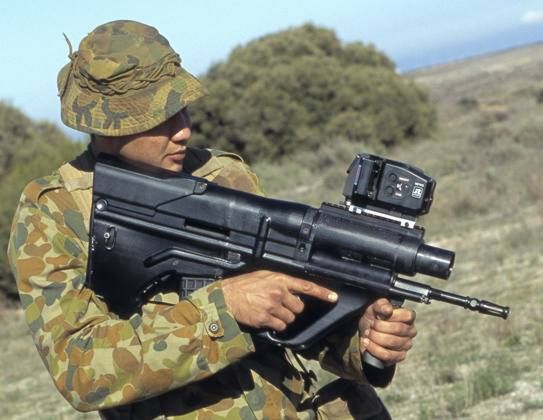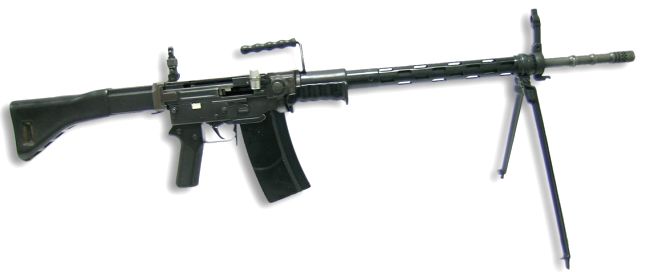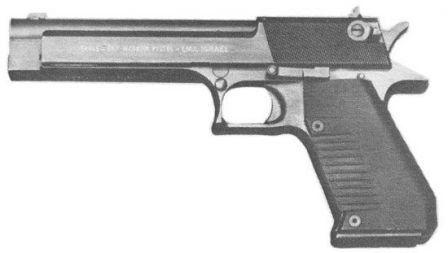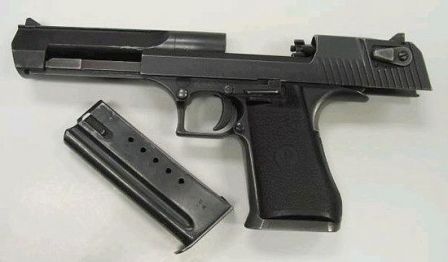‘It was night and low visibility, but I saw a guy with an AK-47 lit
up by the porch light in a doorway about 400 meters away. I watched him
through the sights. He looked like just another Iraqi. I hit him low in
the stomach and dropped him.’ – Specialist James Wilks, 25, from Fort
Worth, Texas. Concealment is key to becoming a great sniper. Highly
trained marksmen who can shoot accurately from incredible distances
with specialized training in high-precision rifles. In addition, they
are trained in camouflage, field craft, infiltration, reconnaissance and
observation, making them perhaps the most feared military presence in a
war. Below is my list of top ten snipers in history and some of the
greatest shots ever fired.
10.Thomas Plunkett (died in 1851)
Was an Irish soldier in the British 95th Rifles. What makes him on of
the greats is that he shot a very impressive French general,
Auguste-Marie-François Colbert.
During the battle at Cacabelos during Monroes retreat in 1809,
Plunkett, using a Baker Rifle, shot the French general at a range of
about 600 meters. Giving the incredible inaccuracy of rifles in the
early 19th century, this was either a very impressive feat, or one hell
of a fluke. Well Plunkett not wanting his army buddies to think he was a
bit lucky decided to take the shot again before returning to his line.
So he reloaded his gun and took aim once again this time at the trumpet
major who had come to the generals aid. When this shot also hit its
intended target, proving that Plunkett is just one badass marksman, he
looked back to his line to see the impressed faces of the others in the
95th Rifles.
Just for comparison the British soldiers were all armed with ‘Brown
Bess muskets’ and trained to shoot into a body of men at 50 meters.
Plunkett did 12 times that distance. Twice.
9. Sgt Grace (4th Georgia Infantry )
The date was May 9th 1864, when Sgt Grace, a Confederate sniper,
achieved what was considered to be an incredible shot at the time, and
what is definitely the most ironic demise of a target in history. It was
during the battle of Spotsylvania when Grace took aim with his British
Whitworth Rifle. His target was General John Sedgwick (pictured above)
and the distance was 1,000 yards. An extremely long distance for the
time. During the beginning of the skirmish, the confederate
sharpshooters were causing Sedgwick’s men to duck for cover. Sedgwick
refused to duck and was quoted saying “What? Men dodging this way for
single bullets? What will you do when they open fire along the whole
line? I am ashamed of you. They couldn’t hit Elephants at this
distance.” His men persisted in taking cover. He Repeated “They
couldn’t hit elephants at this distance” Seconds Later Grace’s shot hits
Sedgwick just under his left eye.
I swear you couldn’t write it. Sedgwick was the highest ranking Union
casualty in the civil war and upon hearing his death Lt. Gen. Ulysses
S. Grant repeatedly asked “Is he really dead”.
8. Charles ‘Chuck’ Mawhinney (1949)
103 Confirmed Kills
Was an avid hunter as a kid and joined the Marines in 1967. He served
in the U.S. Marine Corps during Vietnam and holds the record for number
of confirmed kills for Marine snipers, exceeding that of legendary
Marine sniper Carlos Hathcock. In just 16 months he killed 103 enemies
and another 216 kills were listed as probable’s by the military, only
because it was too risky at the time to search the bodies for documents.
When he left the Marines he told no-one of his of his role during the
conflict and only a few fellow Marines knew of his assignments. It was
nearly 20 years before somebody wrote a book detailing his amazing
skills as a sniper. Mawhinney came out of anonymity because of this and
became a lecturer in sniper schools. He was once quoted saying “it was
the ultimate hunting trip: a man hunting another man who was hunting me.
Don’t talk to me about hunting lions or elephants; they don’t fight
back with rifles and scopes. I just loved it. I ate it up.”
A routinely deadly shot from distances between 300 – 800 yards,
Mawhinney had confirmed kills of over 1000 yards, making him one of the
greatest snipers of the Vietnam war.
7.Rob Furlong
A former corporal of the Canadian Forces, he holds the record for the
longest confirmed sniper kill in history at 1.51 miles or 2,430 metres.
That’s the length of about 26 football pitches.
This amazing feat occurred in 2002, when he was involved in Operation
Anaconda. His Sniper Team consisted of 2 Corporals and 3 Master
Corporals. When a three man Al-Qaeda weapons team moved into a
mountainside position he took aim. Furlong was armed with a .50-caliber
McMillan Brothers Tac-50 Rifle and loaded with A-MAX very low drag
bullets. He fired and missed. His second shot hit the enemies knapsack
on his back. He had already fired his third shot by the time the second
hit, but now the enemy knew he was under attack. The airtime for each
bullet was about 3 seconds due to the immense distance, enough time for
an enemy to take cover. However the dumbfounded militant realised what
was happening just in time to take the third shot in the chest.
6.Vasily Zaytsev (March 23, 1915 – December 15, 1991)
242 Confirmed Kills
Zaytsev is probably the best known Sniper in history thanks to the
movie ‘Enemy At The Gates’. It is a great film and I wish I could say
it was all true. However the truth only goes as far as the battle of
Stalingrad. There was no Nazi Counter-Sniper Specialist in real life.
Well not to the extent of the film. Here’s the truth. Zaytsev was born
in Yeleninskoye and grew up in the Ural Mountains. His surname means
‘hare‘. Before Stalingrad, he served as a clerk in the Soviet Navy But
after reading about the conflict in the city he volunteered for the
front line. he served in the 1047th Rifle Regiment. Zaytsev ran a
sniper school in the Metiz factory. The cadets he trained were called
Zaichata, meaning ‘Leverets’ (Baby Hares). This was the start of the
sniper movement in the 62nd army. It is estimated that the snipers he
trained killed more than 3,000 enemy soldiers
Zaytsev himself made 242 confirmed kills between October 1942 and
January 1943, but the real number is probably closer to 500. I know I
said there was no counter-sniper, but there was Erwin Kónig. Was alleged
to be a highly skilled Wehrmacht sniper. Zaytsev claimed in his memoirs
that the duel took place over a period of three days in the ruins of
Stalingrad. Details of what actually happened are sketchy, but by the
end of the three day period Zaytsev had killed the sniper and claimed
his scope to be his most prized trophy. For him to make this his most
prized trophy means that this person he killed must have been almost as
good as Zaytsev himself.
5.Lyudmila Pavlichenko (July 12, 1916 – October 10, 1974)
309 Confirmed Kills
In June 1941, Pavlichenko was 24 and Nazi Germany were invading the
Soviet Union. She was among the first volunteers and asked to join the
infantry. she was assigned to the Red Armies 25th infantry Division.
From there she became one of 2000 female snipers of the soviet.
Her first 2 kills were made near Belyayevka using a Mosin-Nagant bolt
action rifle with a P.E. 4-power scope. The first action she saw was
during the conflict in Odessa. She was there for 2 and a half months and
notched 187 kills. When they were forced to relocate, she spent the
next 8 months fighting in Sevastopol on the Crimean Peninsula. There she
recorded 257 kills and for this feat she was cited by the Southern Army
Council. Pavlichenkos’ total confirmed kills during WW2 was 309. 36 of
those were enemy snipers.
4.Corporal Francis Pegahmagabow (March 9, 1891 – August 5, 1952)
378 Confirmed kills
300+ Captures
Three times awarded the military medal and twice seriously wounded,
he was an expert marksman and scout, credited with 378 German kills and
capturing 300+ more. He was an Ojibwa warrior with the Canadians in
battles like those at mount sorrel. As if killing nearly 400 Germans
wasn’t enough, he was also awarded medals for running messages through
very heavy enemy fire, for directing a crucial relief effort when his
commanding officer was incapacitated and for running through enemy fire
to get more ammo when his unit was running low.
Though a hero among his fellow soldier, he was virtually forgotten
once he returned home to Canada. Regardless he was one of the most
affective snipers of world war 1.
3.Adelbert F. Waldron (March 14, 1933 – October 18, 1995)
109 confirmed kills
He holds the record for the highest number of confirmed kills for any
American sniper in history. However it is not just his impressive kill
record that makes him one of the best, but also his incredible accuracy.
This excerpt from ‘Inside the Crosshairs: Snipers in Vietnam’ by Col.
Michael Lee Lanning, describes just what I’m talking about:
“One afternoon he was riding along the Mekong River on a Tango boat
when an enemy sniper on shore pecked away at the boat. While everyone
else on board strained to find the antagonist, who was firing from the
shoreline over 900 meters away, Sergeant Waldron took up his sniper
rifle and picked off the Vietcong out of the top of a coconut tree with
one shot (this from a moving platform). Such was the capability of our
best sniper.” Nuff Said.
If there was a scale of difficulty for shots like these, it would be
next to impossible to beat. well lets try to do that anyway.
Here’s ‘white feather’….
2.Carlos Norman Hathcock II (May 20, 1942 – February 23, 1999
Nicknamed *Xa Thu Long Trang* (‘White Feather Sniper’)
93 Confirmed kills
Hathcock has one of the most impressive mission records of any sniper
in the Marine corps. Lets forget about the dozens of shooting
championships he won, during the Vietnam war he amassed 93 confirmed
kills. The Vietnam army put a $30,000 bounty on his life for killing so
many of their men. Rewards put on U.S. snipers by the NVA (North
Vietnamese Army) typically amounted to….say $8.
It was Hathcock who fired the most famous shot in sniper history. He
fired a round, over a very long distance, which went through the scope
of an enemy sniper, hit him in the eye, and killed him. Hathcock and
Roland Burke his spotter were stalking the enemy sniper, (which had
already killed several Marines) which they believed was sent to kill
him specifically. When Hathcock saw a flash of light reflecting off the
enemies scope he fired at it in a split second pulling off one of the
most precise shots in history. Hathcock reasoned that the only way that
this was possible, would have been if both snipers were aiming at each
others scopes at the same time, and he fired first. However, although
the distance was never confirmed, Hathcock knew that because of the
flight time, it would have been easy for both snipers to kill each
other. The white feather was synonymous with Hathcock (He kept one in
his hat) and he removed it only once for a mission. Keep in mind that he
volunteered for this mission, but he had to crawl over 1500 yards of
enemy territory to shoot an NVA commanding general. Information wasn’t
sent until he was on-route. (He volunteered for a mission he knew
nothing about) It took 4 days and 3 nights without sleep of inch-by-inch
crawling. One enemy soldier almost stepped on him as he laid
camouflaged in a meadow. At another point he was nearly bitten by a
viper, he didn’t flinch. He finally got into position and waited for the
general. When he arrived Hathcock was ready. He fired one round and hit
the general through the chest killing him. The soldiers started a
search for the sniper and Hathcock had to crawl back to avoid detection.
They never caught him. Nerves of steel.
1.Simo Häyhä (December 17, 1905 – April 1, 2002 )
Nicknamed ‘The White Death’
705 confirmed kills (505 with rifle, 200 with submachine gun)
Was a Finnish soldier who, using an iron sighted bolt action rifle,
amassed the highest recorded confirmed kills as a sniper in any
war…ever!!
Häyhä was born in the municipality of Rautjärvi near the present-day
border of Finland and Russia, and started his military service in 1925.
His duties as a sniper began during the ‘winter war’ (1939-1940) between
Russia and Finland. During the conflict Häyhä endured freezing
temperatures up to -40 degrees Celsius. In less than 100 days he was
credited with 505 confirmed kills, 542 if including unconfirmed kills,
however the unofficial frontline figures from the battlefield places the
number of sniper kills at over 800. Besides his sniper kills he was
also credited with 200 from a Suomi KP/31 Submachine gun, topping off
his total confirmed kills at 705.
How Häyhä did all this was amazing. He was basically on his own all
day, in the snow, shooting Russians, for 3 months straight. Of course
when the Russians caught wind that a shit load of soldiers were being
killed, they thought ‘well this is war, there’s bound to be casualties’.
But when the generals were told that it was one man with a rifle they
decided to take a bit of action. first they sent in a counter-sniper.
When his body was returned they decided to send in a team of
counter-snipers. When they didn’t come back at all they sent in a whole
goddamn battalion. They took casualties and couldn’t find him.
Eventually they ordered an artillery strike, but to no avail. You see
Häyhä was clever, and this was his neck of the woods. He dressed
completely in white camouflage. He used a smaller rifle to suit his
smaller frame (being 5ft3) increasing his accuracy. he used an iron
sight to present the smallest possible target (a scoped sight would
require the sniper to raise his head for sighting). He compacted the
snow in front of the barrel, so as not to disturb it when he shot thus
revealing his position. He also kept snow in his mouth so his breath did
not condense and reveal where his was. Eventually however his was shot
in the jaw by a stray bullet during combat on March 6 1940. He was
picked up by his own soldiers who said half his head was missing. He
didn’t die however and regained consciousness on the 13th, the day peace
was declared.
Once again total kills…. 505 sniper + 200 submachine = 705 total Confirmed Kills…all in less that 100 days.
By:
listverse.com




































